The question, taking into account comments by the OP, seems to boil down to this:
- How to calculate the current limiting resistor needed for operating an LED with 3.8 Volt forward voltage rating.
LEDs are current-based devices, not voltage based. In other words, the design parameter for a driving circuit is, how much current should be allowed to pass through an LED. This current limiting is frequently done by putting a resistor in series with the LED (one for each LED if several are to be used in parallel).
The current rating of the LEDs is not stated in the question. Since many common LEDs are typically rated for 20 or 30 mA, assuming 30 mA (0.03 Amperes) for the purpose of this answer.
- Supply voltage = 12.6 Volts
- Nominal voltage drop across LED = 3.8 Volts
(this nominal value would apply for nominal current passing through the LED, and both values should be taken from the LED datasheet)
- Therefore, voltage that must be dropped across the resistor =
12.6 - 3.8 = 8.8 Volts
- The current through every component in a series circuit must be equal, hence, applying Ohm's Law
V = I x R to the above voltage gives us
R = 8.8 / 0.03 = 293.33 Ohms
The next higher commonly available resistor value of 330 Ohms would work well - Connecting one in series with each LED fed from the 12 Volt power rail should work fine. The higher than calculated resistor also increases the margin of safety by slightly reducing the current through the LED, without perceptibly reducing illumination.
However, there is another twist to this tale: The power rating of the resistors used.
- By Watt's Law,
P = V x I = V^2 / R.
- For 8.8 Volts to be dropped across 330 Ohms,
P = 0.23467 Watts
- This is pretty close to a quarter watt, one of the commonly used resistor power ratings. Therefore, for a margin of safety, a higher wattage resistor is suggested.
- In conclusion: Use a half-watt, 330 Ohm resistor in series with each LED in your circuit.
